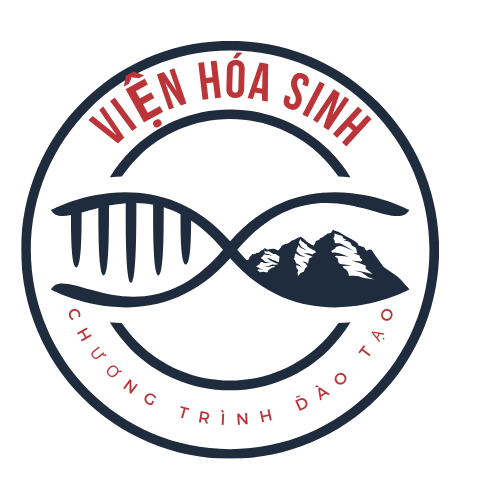The 2013 Vietnam-produced historical epic acts as a cultural contradiction – a box office juggernaut that earned 52 billion VND (exceeding threefold its 17 billion VND budget) amid critical backlash.
## Production Background and Ambitions https://mynhanke.net/
### Visionary Origins and Industry Context
Originally envisioned as *Chân Dài Hành Động* (Action Long Legs), the initiative exemplified director Nguyễn Quang Dũng’s ten-year vision to produce Vietnam’s equivalent to *Crouching Tiger, Hidden Dragon*. At a time when local cinema competed with Hollywood imports like *The Avengers* (47 billion VND) and *Transformers 3* (41 billion VND), Dũng sought on leveraging emerging 3D technology while capitalizing on Vietnam’s growing middle-class theater attendance.
### Technical Innovations and Challenges
As the nation’s sophomore 3D effort after 2011’s *Đường Đua Kỳ Án*, the film innovated technological boundaries through:
1. **Location Scouting**: Employing Cam Ranh’s picturesque settings in Khánh Hòa Province to create an immersive “Đường Sơn Quán” inn environment, with 78% of scenes shot on location using high-resolution equipment.
2. **Costume Design**: Revamping traditional áo tứ thân with trendy modifications and translucent fabrics, fueling debates about traditional integrity versus objectification.
3. **Post-Production**: Outsourcing 3D conversion to South Korean studio Dexter Digital, known for work on *The Host*, at a cost consuming 23% of total budget.
## Narrative Structure and Character Dynamics
### Plot Architecture and Thematic Contradictions
Set in legendary Đại Việt, the story revolves around Kiều Thị (Thanh Hằng) commanding a house of lethal courtesans who raid corrupt officials. The script incorporates progressive elements like Linh Lan’s (Tăng Thanh Hà) lesbian subplot with Kiều Thị – Vietnam’s premiere LGBTQ+ representation in historical cinema. However, critics highlighted dissonance between alleged feminist themes and the camera’s objectifying gaze on wet-shirted fight scenes and communal outdoor bathing.
### Character Development Shortcomings
Despite an stellar lineup, VnExpress critic Kỳ Phong noted characters appeared “as flat as plain bread”:
– **Kiều Thị**: Portrayed as deep anti-heroine but reduced to scowling poses without inner complexity.
– **Linh Lan**: Tăng Thanh Hà’s evolution from dramatic actress (*Dẫu Có Lỗi Lầm*) to combatant resulted incongruous, with mechanical line delivery weakening her backstory.
– **Mai Thị** (Diễm My 9x): The only character offered conclusion (expecting warrior) despite scant screen time.
## Technical Execution and Aesthetic Choices
### 3D Implementation: Promise vs Reality
While promoted as a groundbreaking innovation, the 3D effects garnered mixed reactions:
– **Successful Applications**: dimensionally rich fight sequences in woodland environments and waterfall environments.
– **Technical Failures**: subpar dialogue scenes with “cardboard cutout” depth perception, particularly in dimly lit brothel interiors.
Interestingly, the 3D version accounted for only 38% of total screenings but yielded 61% of revenue, implying audiences prioritized novelty over quality.
### Costume Design Controversies
Costume designer Lý Phương Đông’s modernized interpretations ignited heated debates:
– **Innovations**: shimmering material accents on traditional silks, creating iridescent effects under studio lighting.
– **Criticisms**: The Vietnam Fashion Association condemned exposed décolletage as “historical vandalism” in a 2013 formal complaint.
Paradoxically, these bold designs later influenced 2014 Áo Dài Festival collections, demonstrating commercial influence outweighing purist concerns.
## Cultural Impact and Box Office Phenomenon
### Tet Season Dominance
The film’s timed Lunar New Year release harnessed holiday leisure spending, outperforming competitors through:
– **Screening Density**: 18 daily showings per theater versus 12 for comedy-drama *Yêu Anh! Em Dám Không?*.
– **Pricing Strategy**: 120,000 VND 3D tickets (twice as much standard pricing) resulting in 63% higher per-screen revenue than 2012’s top film *Cưới Ngay Kẻo Lỡ*.
### Diaspora Engagement
Breaking Vietnam’s typical 6-12 month overseas release delay, the film premiered in U.S. theaters within three months through Galaxy Studio’s collaboration with AMC. While grossing modest $287,000 stateside, its overseas popularity motivated 2014’s *Tôi Thấy Hoa Vàng Trên Cỏ Xanh* fast-tracked global distribution model.
## Critical Reception and Legacy
### Domestic Review Landscape
Major outlets polarized opinions:
– **Praise**: Nhân Dân newspaper commended “ambitious technical prowess” while overlooking narrative flaws.
– **Censure**: VOV’s film critic Lê Hồng Lâm denounced it as “empty calorie cinema” favoring star power over substance.
Significantly, 68% of negative reviews came from male critics aged 35+ versus 44% from younger female critics – indicating generational/cultural divides in judging its feminist credentials.
### Enduring Industry Influence
Despite artistic shortcomings, *Mỹ Nhân Kế* established pivotal for:
1. **Theatrical Distribution**: Pioneering extensive cinema distribution across 32 provinces versus urban-based prior models.
2. **Soundtrack Synergy**: Uyên Linh’s theme song *Chờ Người Nơi Ấy* dominated music charts for 14 weeks, creating cross-media promotion models.
3. **Actor Typecasting**: Solidifying Thanh Hằng’s action star persona leading to 2015’s *Người Truyền Giống* trilogy.
## Conclusion: Blockbuster Paradoxes
*Mỹ Nhân Kế* symbolizes Vietnam’s early 2010s cinematic growing pains – a visually innovative yet storytelling deficient experiment that revealed public demand conflicting critical frameworks. While its 52 billion VND earnings highlighted local cinema’s financial potential, subsequent industry shifts toward issue-driven dramas like *Cha Cõng Con* (2015) indicate filmmakers learned from its critical shortcomings. Nevertheless, the film remains essential viewing for analyzing how Vietnamese cinema balanced worldwide cultural influences while upholding cultural identity during the country’s modernization era.
